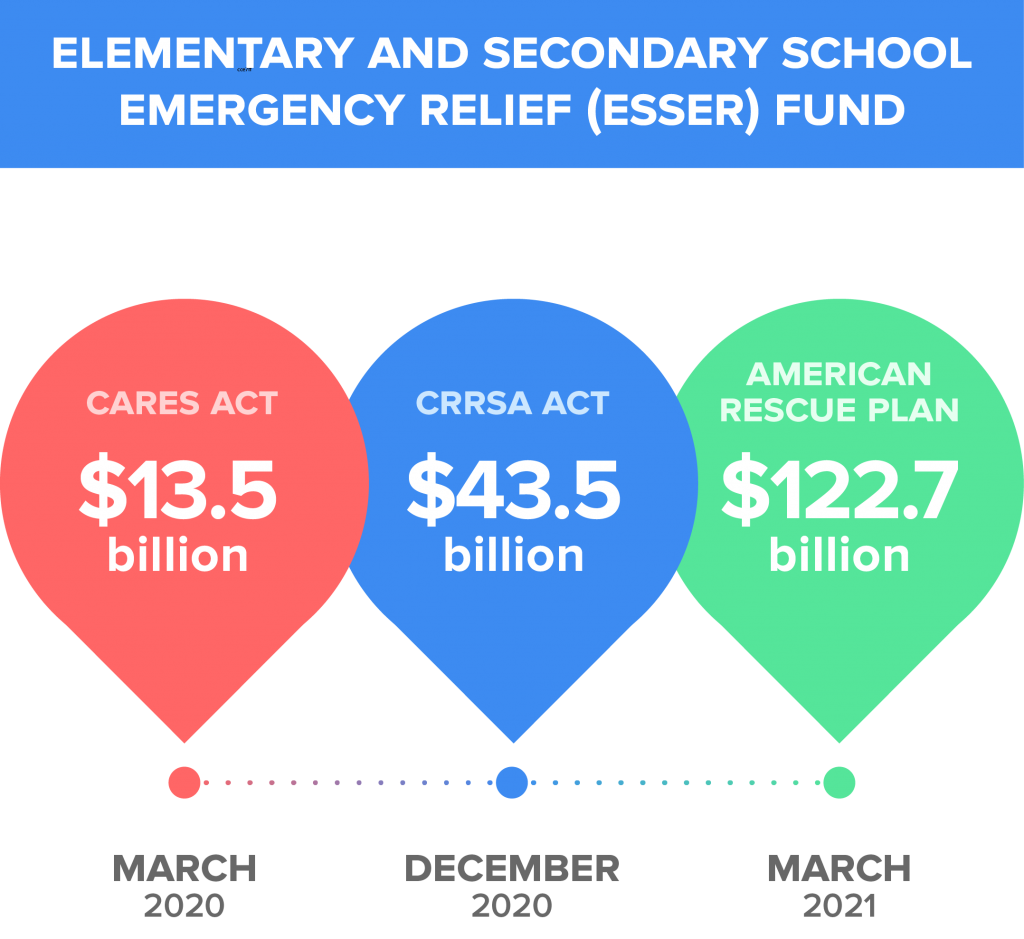A Guide To ESSER Funding
What is ESSER?
 To support schools and districts in addressing the impact of COVID-19, Congress has provided financial support through the Elementary and Secondary School Emergency Relief (ESSER) Fund.
To support schools and districts in addressing the impact of COVID-19, Congress has provided financial support through the Elementary and Secondary School Emergency Relief (ESSER) Fund.
Since the onset of COVID-19, billions of dollars have been approved.
How It Works
Amount my district can receive:
ESSER funds are allocated to each state as a formula grant based on the state’s level of Title I, Part A funding. Ninety percent of state ESSER funds must be distributed to districts based on each district’s share of Title I, Part A funds (states can keep the remaining 10%).
Contact your district’s federal program coordinator to inquire about how much your district is being allocated from the state education department.
To view funding estimates for your district, click here.
![]()
How to apply:
The ESSER grants are awarded to State Educational Agencies (SEAs), and school districts, or Local Educational Agencies (LEAs). Districts or LEAs must apply to their respective SEA to receive the funds.
![]()
What the funds can be used for:
Districts can put funds towards any “activity authorized by the Elementary and Secondary Education Act.” Additionally, ESSER II and III legislation specifies that funds can be used to address learning loss.
Districts are able to spend their ESSER funds on a range of activities, services, and goods (outlined in the legislation Section 18003(d)). Find out more info here.
Using ESSER Funds To Advance Larger District Safety Objectives
With COVID-19 relief funding, schools are able to prioritize solutions that will solve education challenges, namely, how to close the learning loss. If done correctly, that same solution can double as a tool to help solve a myriad of other school safety issues that could potentially impact student success. Two birds with one stone.
Use Case: Implement smart IDs for a safer, healthier, more engaged school

Identification:
Students use ID/fob/bracelet to pay for lunch, attendance, etc.

Teach Good Behavior:
Students learn the importance of carrying an ID, storing it in a safe place and using it for various things, a practice adopted by higher ed and corporate settings.

Actionable Safety Insights:
Provides administrators with valuable data to analyze so they can see patterns, spotting red flags early and supporting students in a more meaningful way.
Services Aligned With ESSER Funding
Schools can overcome the learning loss while creating a safer, more engaged environment through programs that focus on:
Reducing Truancy and Chronic Absenteeism

Remote learning has affected students in many ways but with the right strategies in place, students can get back on track academically and position themselves for the workforce or higher ed.
Ways to solve this:
Encouraging Social-Emotional Learning and Support

Research shows a 13% increase in academic achievement with SEL programs, according to the Committee for Children.
Here are a few ways to improve SEL and get students reengaged:
Committing to a Healthy and Safe Environment

We all know the importance of hand washing and disinfecting. But there are even more ways to combat virus spread that aren’t talked about much.
Ways to solve this: